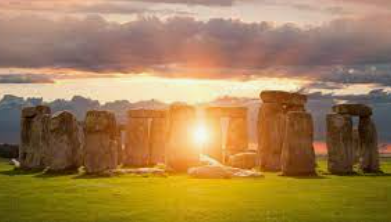The Summer Solstice: The Longest Day of the Year
 Marking the beginning of summer, the Summer Solstice or Midsummer is the day with the longest period of sunlight. Its name derives from Latin words sol (sun) and sistere (to stand still) because the sun’s position at noon doesn’t appear to change much on this day and surrounding days. Cultures around the world have celebrated this day throughout history.
Marking the beginning of summer, the Summer Solstice or Midsummer is the day with the longest period of sunlight. Its name derives from Latin words sol (sun) and sistere (to stand still) because the sun’s position at noon doesn’t appear to change much on this day and surrounding days. Cultures around the world have celebrated this day throughout history.
Stonehenge is thought to have been built around 2500 BC in order to establish the date of the Summer Solstice and it may have been used as a starting point to count the days of the year. Stonehenge is still a gathering place for New Age and Neopagan groups on this occasion.
Ancient cultures associated Midsummer with femininity, rebirth and things related to agriculture. In ancient Egypt, it helped to predict the annual flooding of the Nile River which brings life to the areas surrounding it. Ancient Romans celebrated Vestalia, a festival in honor of Vesta, goddess of the hearth. Gauls celebrated with bonfires to boost the sun’s energy for the growing season and guarantee a good harvest come fall.
What will you do to celebrate the longest day of the year? Maybe spend some time outdoors, take a walk or have picnic and bonfire? Share your plans on Bridgewaters Facebook post today.
